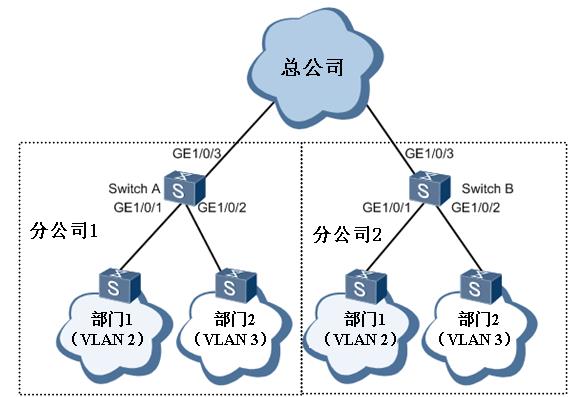QinQ was originally created to expand the VLAN ID space, but with the development of metro Ethernet and the requirements of operators for refined operation, QinQ’s double-layer tags have further usage scenarios. Its inner and outer labels can represent different information. For example, the inner label represents the user, and the outer label represents the business. In addition, QinQ data frames traverse the operator’s network with two layers of labels, and the inner label is transparently transmitted, which can also be regarded as a simple and practical VPN technology. Therefore, it can be used as an extension of the core MPLS VPN in Metro Ethernet VPN, and finally form an end-to-end VPN technology. Due to the convenience and ease of use of QinQ, it has now been widely used in various operators. For example, QinQ technology is combined with multiple services in metro Ethernet solutions. In particular, the emergence of flexible QinQ (Selective QinQ/VLAN Stacking) has made QinQ services more respected and favored by operators.
We know that a VLAN tag in a common VLAN is used to distinguish users, but if you want to distinguish users and service types at the same time, what should we do? As shown in Figure 7-11, two branches and subsidiaries are connected to a head office, and each branch and subsidiary has adopted VLAN to distinguish employees in different departments, but the department VLAN ID planning of the two subsidiaries overlaps. In this way, if only one layer of VLAN tag is used in the data frame, the head office cannot distinguish which subsidiary the data comes from and cannot perform any processing on the data of different subsidiaries.

To solve this problem, we can imagine creating different VLANs for each subsidiary on the switch of the head office. In this way, when the switch port of the head office connected to the corresponding subsidiary receives the data frame, a VLAN tag is added to the outside of the data frame (at this time there are two VLAN tags in the data frame, and the original VLAN tag is called the inner VLAN Tag, the newly added is called the outer VLAN tag). For example, the outer VLAN tags added to the data frames of subsidiary 1 and subsidiary 2 are VLAN 10 and VLAN 20, so that the The data of the subsidiaries are differentiated, and different services can also be provided for the data from the two subsidiaries, that is, differentiated services.


